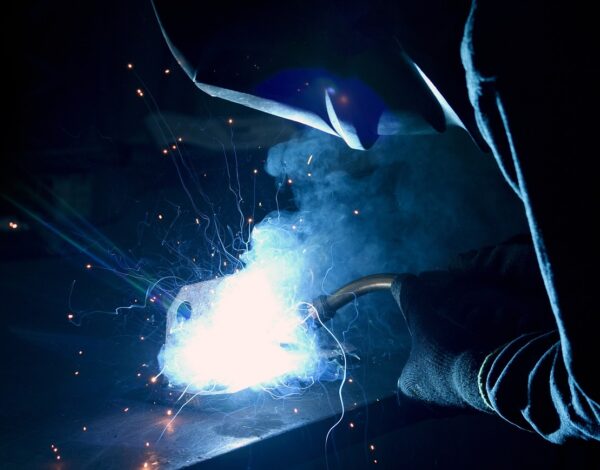

Dry Ice Keeps Commercial Kitchens Cool and Confident
Commercial kitchens have a considerable responsibility. Consumers expect their food to be delicious, nutritious, and free from contaminants. However, the CDC estimates that each year 48 million people get sick from a foodborne illness. Two major causes of food poisoning are cross-contamination and improper food storage. To prevent these issues efficiently and effectively, some commercial kitchens are using dry ice.
Dry Ice Blasting to Prevent Cross-Contamination
Commercial kitchens need to be cleaned regularly to reduce the risk of cross-contamination and ensure compliance. Dry ice blasting is now FDA, USDA, and EPA-approved for use in commercial kitchens on industrial equipment. It decontaminates surfaces by using pellets of dry ice. Due to the extremely low temperature, it freezes any contaminate, kills bacterial growth, and removes it from the surface.
How Dry Ice Blasting Works
Stage 1. Thermal shock – During dry ice blasting, the surface contaminants freeze so rapidly that they become brittle and fracture. Weakening the material structure is necessary for their removal.
Stage 2. Impact – When the pressurized dry ice pellets strike the target surface at a high rate of speed, the already cracked and brittle contaminants detach.
Stage 3. Expansion shock– The rapid sublimation of the dry ice pellets produces an instant expansion of gas. When combined with the impact of the pellets colliding with the target surface, dry ice cleaning physically removes the surface contaminants.
Dry Ice Blasting vs. Traditional Cleaning
The traditional method utilizes a team that deep cleans with chemical disinfectants. Unfortunately, this cleaning method is costly and can negatively impact the taste and overall quality of the food being produced. Dry ice is a food-grade material and dry ice blasting is quicker, more effective, and environmentally friendly, as it uses recycled CO2.
Other benefits of dry ice blasting:
- Non-conductive
- It does not produce any combustible or volatile byproducts, so it is safe around circuit breakers, switches, and exposed wires.
- Non-abrasive
- It will not damage expensive kitchen equipment.
- No secondary waste
- It leaves no residue, so there is little to no cleanup.
- Reduced downtime
- The surfaces can be cleaned while still hot and in position, eliminating the need for moving or disassembling.
- No water needed
- It eliminates the use of water that contributes to mold and bacteria growth.
Dry Ice for Food Storage
Proper food storage is extremely important for commercial kitchens. The CDC recommends storing food at under 40 degrees F, as bacteria can quickly multiply on food left at temperatures between 40 degrees and 140 degrees F. Commercial kitchens typically have walk-in refrigerators and deep freezes that serve them well, but these storage methods may be compromised in the event of a power outage or emergency. In any case, dry ice is very effective at keeping food safe. Dry ice can be used to refrigerate, flash freeze, and store dry goods.
Dry Ice for Refrigeration/Freezing
Dry ice temperatures are around -109 degrees F and because dry ice does not become liquid, it leaves no residue. It’s lighter than wet ice and can also be used for safely transporting food. For storing, start with a relatively small amount of dry ice and place it on the lowest refrigerator shelf or highest freezer shelf. This will keep food fresh for at least four days.
Dry Ice for Flash Freezing
Flash freezing is the process of freezing an item quickly at an extremely low temperature with cold, circulating air. A cooler or freezer can be used. Put a substantial amount of dry ice at the bottom of a cooler/freezer, place your food on a flat pan and place the flat pan in the cooler/freezer. Close the container, but do not seal and wait until the food is frozen, which typically takes about two hours.
Dry Ice for Long-term Storage
Dry ice can be used to store dry goods long-term. Line the bottom of the container with dry ice and then pour dry goods on top. To eliminate the dangerous pressure that can build during sublimination, don’t completely seal the lid. After about six hours, the dry ice will have fully sublimated, and all the oxygen is replaced with carbon dioxide. When sublimination is complete, tighten the seal and your goods will be safe from spoilage.
Dry Ice Suppliers in the Western United States
Dry ice is an effective material. It benefits consumers, commercial kitchens, and the environment. In line with Rocky Mountain Air Solutions’ dedication to providing our customers with flawless dependability, we are expanding our service capabilities in 2023 to include a dry ice line that will support dry ice for commercial kitchens, catering and food storage, dry ice blasting, and many other applications using solid carbon dioxide. Contact your local branch today in any one of our five states (Colorado, Utah, Idaho, Wyoming, Nebraska) for more information. We look forward to serving you!



